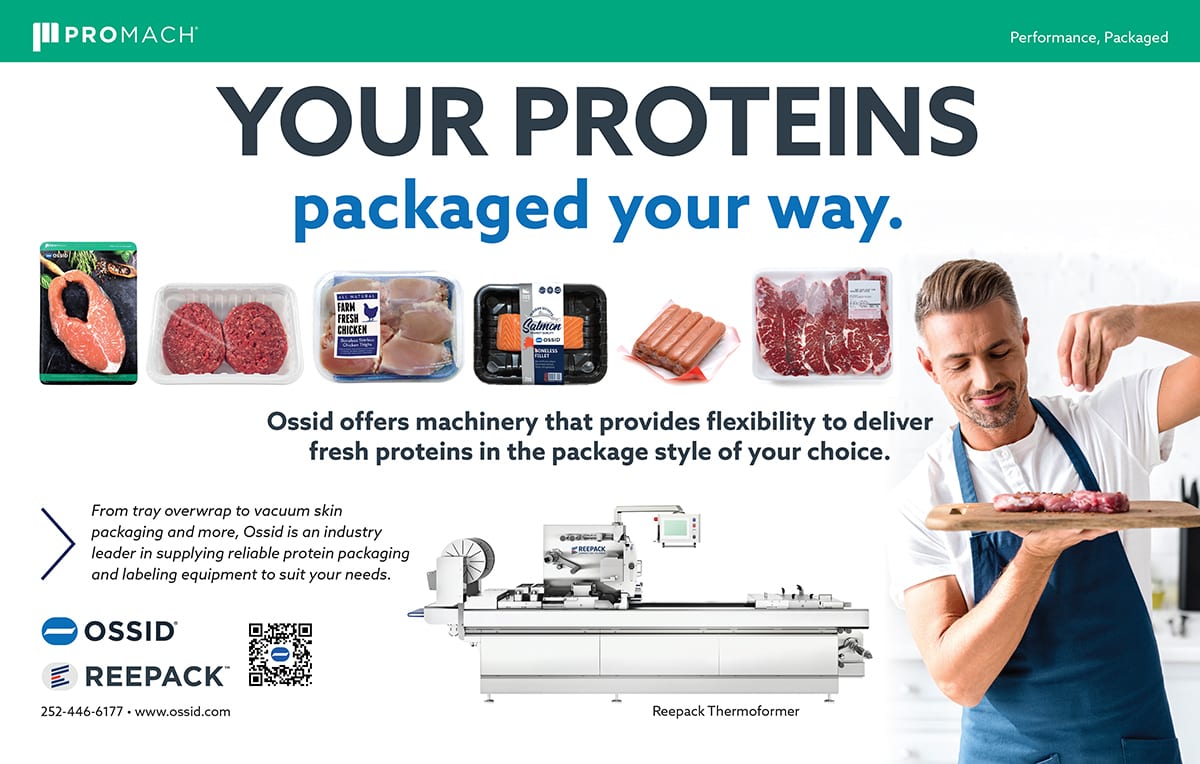2021 deli
Sausage Report
2024
Seaboard Foods
2024 Processor of the Year
cover story: Economic Outlook 2025
Inflationary hangover persisting
for consumers
Consumers in the low- to middle-income segment struggle to cover essentials.
Chief Editor
by Fred Wilkinson
Despite annual inflation recently receding to its lowest level since February 2021 and wage increases outpacing inflation, US consumers in the low- to middle-income brackets are struggling to cover essentials, including groceries. Essentials account for a larger share of low- and middle-income consumers’ budgets, impacting their discretionary spending on food at home as well as dining out.
While rising prices have moderated, they are not declining, and consumers are paying higher prices for meat and poultry products. The average price per pound in the meat department across all cuts and kinds, both fixed and random weight, stood at $4.67 in October 2024, up 1.9% year on year and up 11.5% from October 2021, according to Circana retail data analysis.
“Shoppers tell us that they remain concerned over inflation, with 62% saying they are extremely concerned,” said Melissa Myres, director, insights, at market research firm 84.51°. Myres said the top three ways consumers are stretching their food dollar are looking for sales/deals/coupons more often (71%) cutting back on non-essentials (55%) and switching to a lower-cost brand more often (51%).
“While overall financial comfort is up versus a year ago, 21% of shoppers still say that are not comfortable at all with their finances,” she said. “Of those not comfortable, they cite grocery prices, monthly bills and inflation as the top drivers.”
In response to inflation, Myres said 40% of shoppers said they are going out and ordering food less and grocery shopping more. Additionally, 23% are buying less meat, fish or produce. When asked what percentage of the food they consumed was from, 75% said a store, 15% a restaurant (takeout, delivery or drive-through) and 8% a restaurant (eaten on site).
“Over the next few months, 48% of shoppers tell us that they plan to have more sit-down dinners at home,” Myres said. The main factors consumers cited for the shift toward food at home are cost savings (81%), health benefits (50%), convenience (43%), quality of ingredients (37%) and timesavings (35%).
Among strategies meat and poultry marketers can leverage to appeal to value, Myres suggested increasing the variety and affordability of meal kits and grab-and-go options -- with attention to portion sizes and diversity -- to cater to different household sizes and dietary restrictions.
What consumer trends will mean for meat and poultry sales will vary by region, customer segment and occasion, said Rob Dongoski, global lead for food and agribusiness at Kearney, a strategy and management consulting firm.
“As beef prices continue upward and food prices continue to challenge consumers, there is likely a shift to lower cost protein options like poultry,” Dongoski said, adding that consumers continue to perceive poultry as a healthier option than low-cost beef like burgers.
He said dietary trends for health-conscious consumers continue to trend toward higher protein, lower carb format, which will increase protein demand.

Karl McDermott, chief SaaS officer for cold chain integrity solutions provider DeltaTrak, shares supply chain insights on what meat and poultry product manufacturers and handlers can expect in the coming year.
Dongoski sees the following on the horizon for protein markets in 2025:
- Beef – Low herd sizes and waning demand for low-end products will continue to keep the market in flux.
- Pork – Production is challenged due to demand factors – a) export demand primarily China and b) rise of millennial/Gen Z consumers who show little interest in pork.
- Poultry – Structurally stable, and demand continues to be strong. Disease outbreak (mostly HPAI) has become more common, and aggressive measures to prevent and isolate will be critical (especially with 2024 examples of HPAI being transmitted to both cattle and humans).
According to US Department of Agriculture forecasts, 2025 beef production will decline compared to 2024, with an estimated more than 26 billion pounds of beef expected to be produced. The decline is largely due to lower cattle inventories.
USDA forecasts that the poultry industry will experience steady growth in 2025, with production and exports projected to increase as broiler production reaches more than 47 billion pounds. Turkey production outlook projects 5.18 billion pounds of turkey produced in 2025.
According to US Department of Agriculture forecasts, 2025 beef production will decline compared to 2024, with an estimated more than 26 billion pounds of beef expected to be produced. The decline is largely due to lower cattle inventories.
USDA projects global chicken meat exports will increase 2% in 2025, to 13.8 million tons, with Brazil expected to be a major contributor to growth due to its disease-free status, competitive pricing and export orientation.
USDA’s 2025 pork forecast projects pork production will be around 28.5 billion pounds, a roughly 2% increase compared with 2024,
Production equipment turnaround
According to PMMI, packaging machinery shipments in the US grew 5.8% in 2023 to $10.9 billion. While that growth rate is forecast to slow to 2.5% for 2024, PMMI predicts 2025 will bring an upturn in sales growth rates, hitting a high of 8% in 2027. PMMI expects the slowdown in 2024 is the next low point in the industry’s typical peak-to-trough sales cycle lasting three to five years.
Opening image credit: GettyImages / MicroStockHub / iStock / Getty Images Plus


